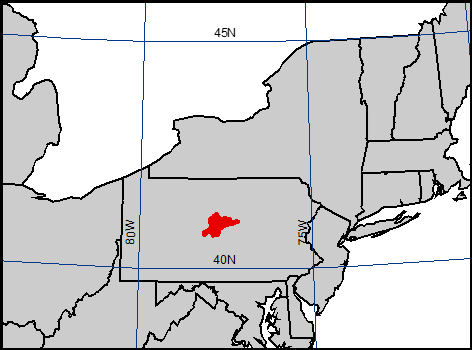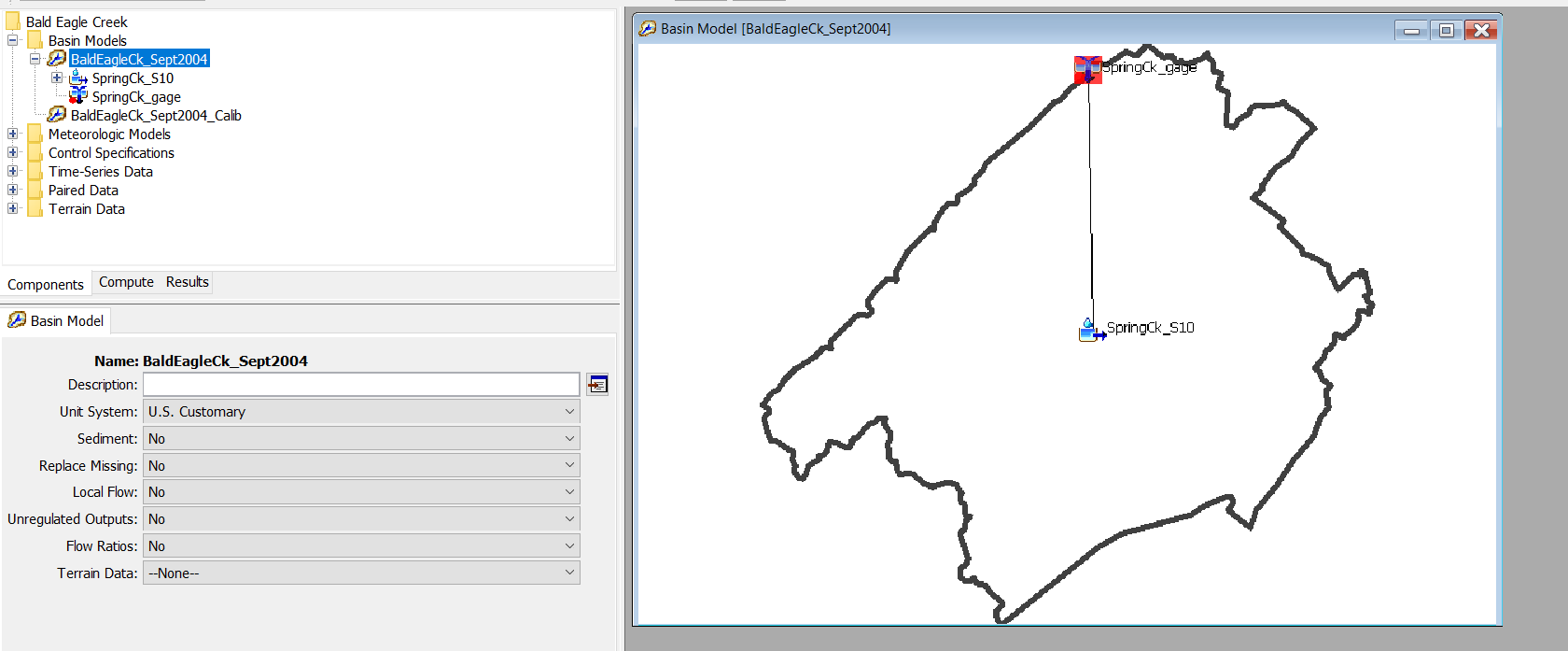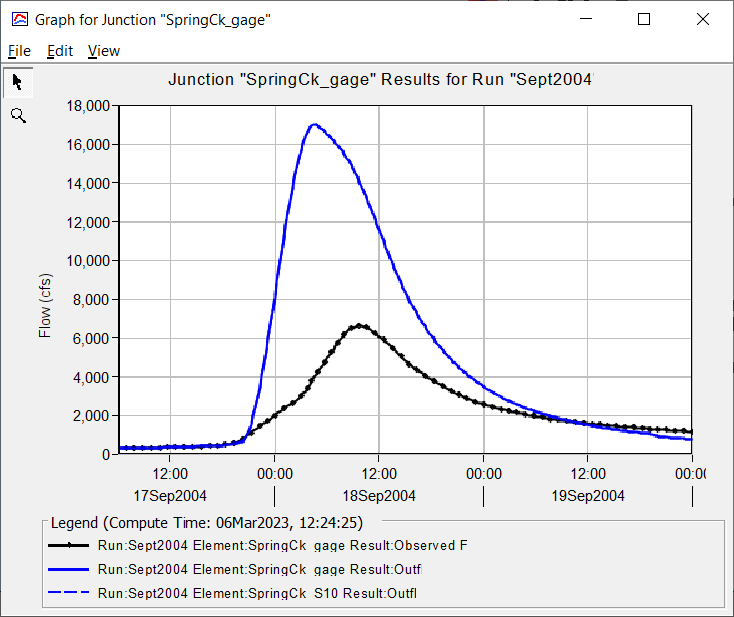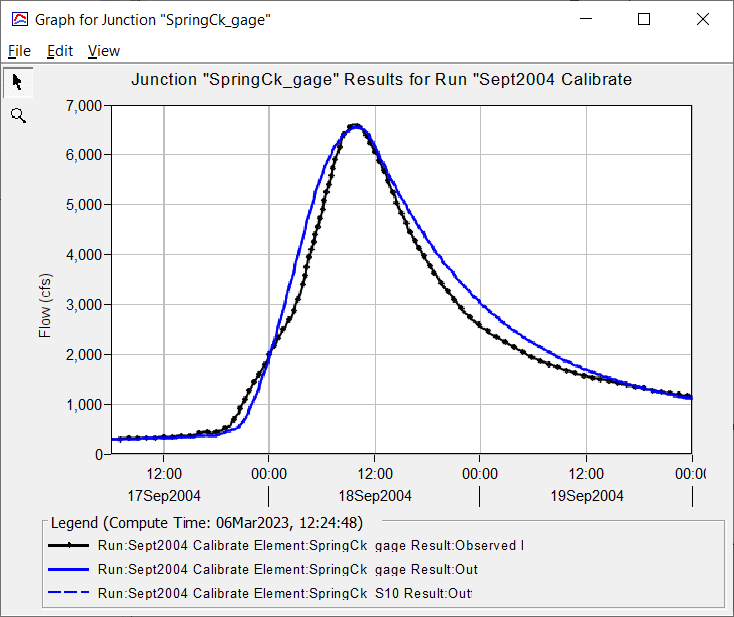Last Modified: 2023-03-09 17:16:04.623
This page is part of the Applying the Differential Evolution Optimization Search Method for Single Event Calibration tutorial. It introduces the project model for the Bald Eagle Creek watershed used throughout the tutorial. If you don't have the project files open from the previous step, you can download them at this link.
Download Bald Eagle Watershed project files here.
Foster Joseph Sayers Dam is located on Bald Eagle Creek in Centre County, PA (as shown below). Sayers dam is about 14 miles upstream of the confluence of Bald Eagle Creek and the West Branch Susquehanna River at Lock Haven, PA.

You will see two basin models when you open the example project. The BaldEagleCk_Sept2004 basin model is the uncalibrated model and the BaldEagleCk_Sept_Calib is the calibrated basin model. The drainage area upstream of Sayers Dam (336.8 square miles) was divided into three subbasins, SpringCk_S10, BaldEagleCk_S40, and BaldEagleCk_S30. The original model was simplified for this workshop to only include the SpringCk_S10 subbasin and the observed flow at the SpringCk_gage, as shown in the figure below.

The September 2004 flood event was selected for this example. The figure below shows preliminary results and observed flow at the SpringCk_gage junction in the BaldEagleCk_Sept2004 basin model (Sept2004 simulation run). Results were generated by an uncalibrated model. Based on differences in the computed flow magnitude, time, and shape, the loss, transform and baseflow parameters needed to be adjusted from initial estimates.

The figure below shows modeled and computed results from the BaldEagleCk_Sept2004_Calib basin model after manual calibration (Sept2004 Calibrate simulation run). Parameter values were adjusted within reason to improve the simulated peak flow, total runoff volume and time of peak flow.

The figure below contains the calibration summaries for both the Sept2004 and Sept2004 Calibrate simulation runs. Model performance is in the very good range after the model was calibrated to the flood event.

The following table contains the initial parameter estimates and final parameter values after manual calibration of the SpringCk_S10 subbasin. Notice the initial loss and initial baseflow values did not change. Initial states were determined by running a few iterations of the model and setting the values so model results matched initial baseflow and initiation of runoff. There are parameter interactions as some parameter impact similar aspects of the runoff response. For example, the constant loss rate, Clark storage coefficient, and some groundwater parameters impact the magnitude of the computed hydrograph. The model can be simplified by relating model parameter to one another. For this example, the GW 1 coefficient was set to be equal to the Clark storage coefficient. The GW 1 Reservoir parameter (number of linear reservoirs in series with the same GW 1 coefficient) was adjusted to control the magnitude and timing of the baseflow hydrograph.
| SpringCk_S10 - BaldEagleCk_Sept2004 | SpringCk_S10 - BaldEagleCk_Sept2004_Calib |
|---|
| Initial Loss (in) | 2 | 2 |
| Constant Rate (in/hr) | 0.1 | 0.38 |
| Impervious (%) | 2.3 | 2.3 |
| Time of Concentration (hr) | 8.09 | 15 |
| Storage Coefficient (hr) | 8.09 | 14 |
| GW 1 Initial Flow (cfs/mi2) | 0 | 0 |
| GW 1 Fraction | 0.1 | 0.05 |
| GW 1 Coefficient (hr) | 8.09 | 14 |
| GW 1 Reservoirs | 5 | 5 |
| GW 2 Initial Flow (cfs/mi2) | 2 | 2 |
| GW 2 Fraction | 0.1 | 0.1 |
| GW 2 Coefficient (hr) | 100 | 100 |
| GW 2 Reservoirs | 1 | 1 |
Proceed to learn more about the Differential Evolution search method: The Differential Evolution Search Method.
Return to the start of this tutorial: Applying the Differential Evolution Optimization Search Method for Single Event Calibration.